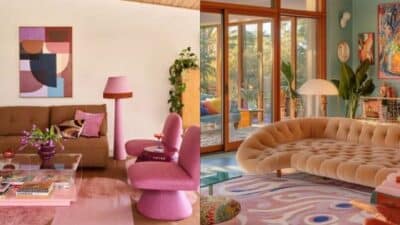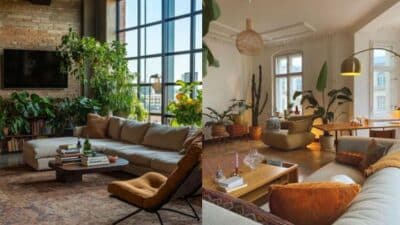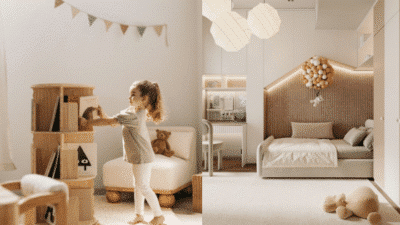Rustic home decor creates a warm and inviting atmosphere by emphasizing natural materials and simple, functional design. It draws inspiration from rural and farmhouse styles, focusing on elements like worn wood, earthy tones, and metal accents to bring an organic feel into your space. The key to rustic decor is blending practicality with natural beauty, making your home both comfortable and visually appealing.
You can achieve a rustic look through carefully chosen furniture and decorative items that highlight texture and craftsmanship. Incorporating pieces like reclaimed wood tables, antler lighting, or soft, nature-inspired textiles helps build a cohesive style that feels authentic and timeless. This approach works well in various rooms, especially kitchens and living areas, where warmth and connection to nature are welcome.
By focusing on understated, durable items and a balanced color palette, you create a home environment that reflects simplicity and harmony. Rustic decor isn’t about perfection but about celebrating the charm of imperfection and the beauty of natural materials.
Key Takeways
- Rustic decor emphasizes natural materials and earthy tones.
- Furniture and accessories should highlight texture and craftsmanship.
- A cohesive rustic style balances simplicity with organic elements.

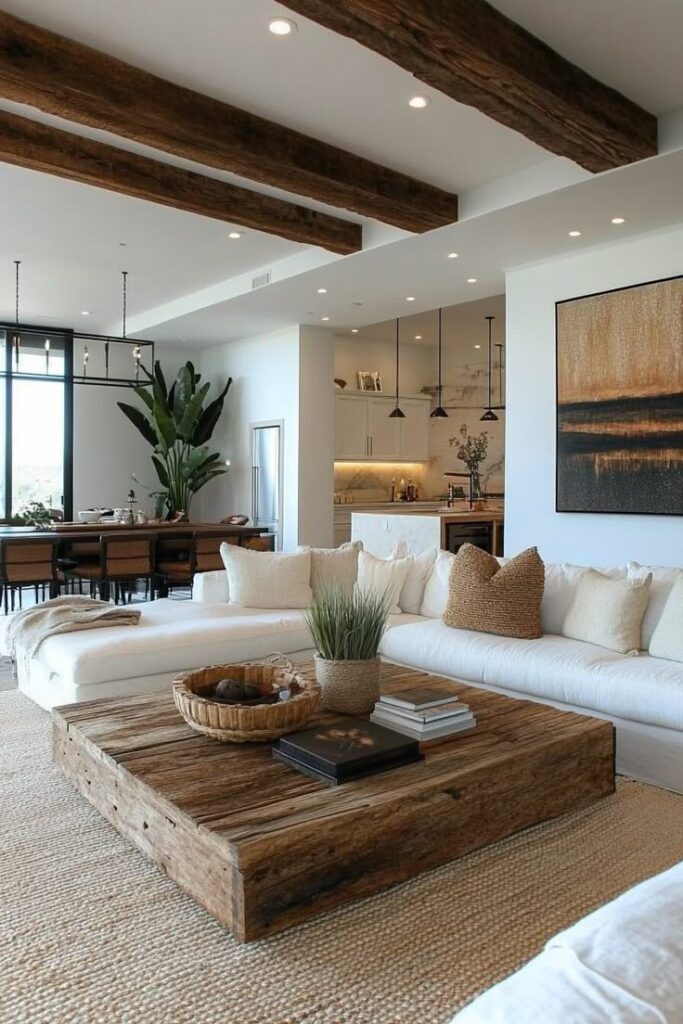
What Defines Rustic Home Decor?
Rustic home decor centers on natural materials, simple forms, and a comfortable, casual vibe. It highlights texture and aged features to bring warmth and authenticity to your space.
Key Characteristics of Rustic Charm
You’ll find rustic charm in the use of raw, unpolished materials like wood, stone, burlap, and jute. These elements create a tactile, organic feel that contrasts with sleek modern finishes.
Colors tend to be earthy: browns, greens, warm creams, and muted shades that mirror outdoor landscapes. Furniture is often large, sturdy, and practical, with visible grain or knots.
You can add rustic decor through handmade or distressed pieces that emphasize craftsmanship over perfection. Textiles like wool throws or linen cushions enhance comfort without fussiness.
Shabby chic overlaps with rustic style by using aged, worn finishes, but rustic decor focuses more on ruggedness and natural authenticity. It’s less about softness and more about embracing imperfections.
Evolution of Rustic Style
Rustic design has evolved from traditional rural origins to a broader, more versatile aesthetic. Once strictly tied to cabins and farmhouses, it now blends with modern style for a balanced look.
You can mix rustic with contemporary elements like metal lighting or clean-lined furniture to keep the space feeling current without losing warmth. This fusion avoids the dated or overly kitschy appearance sometimes linked with classic rustic.
Over time, rustic decor has expanded to include eco-friendly and sustainable materials. This shift appeals to you if you want your design to reflect environmental awareness in addition to rustic charm.
By embracing both aged and updated features, your rustic home decor stays timeless and adaptable to changing tastes.
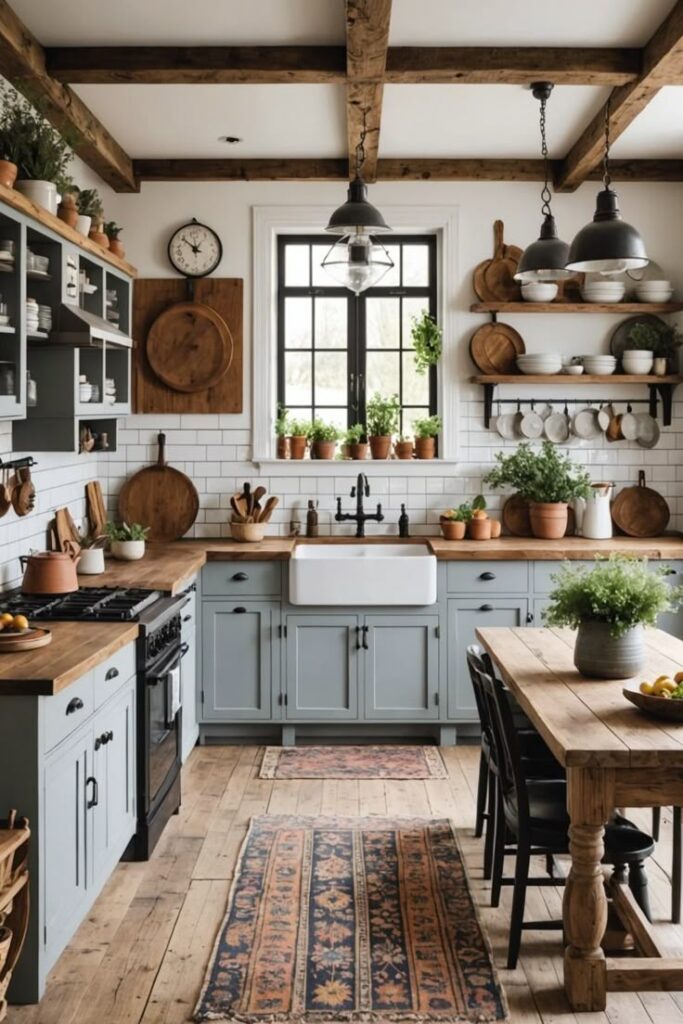
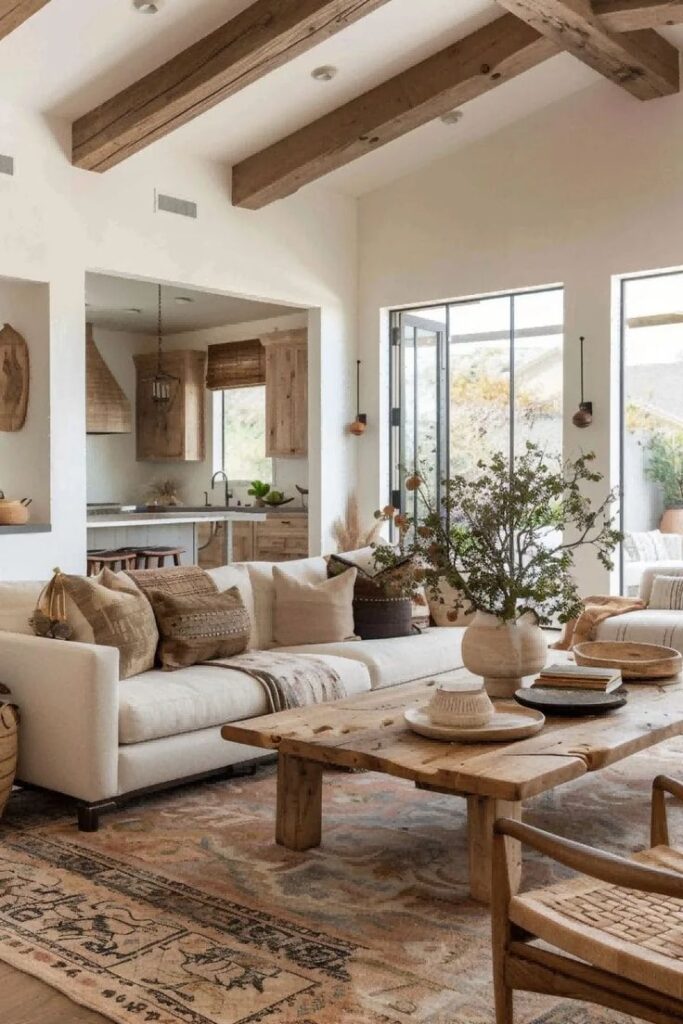
Materials and Finishes in Rustic Design
Rustic design relies on natural textures and authentic finishes that bring warmth and character to your home. You’ll often encounter wood with visible grain and rough edges, metals with a matte or aged look, and finishes that balance rawness with refinement.
Wood Types and Treatments
In rustic decor, wood is typically unfinished or treated to preserve its natural texture. You want to seek out hardwood types like oak, pine, or reclaimed barn wood. These woods have strong grain patterns and natural knots that add visual interest.
Treatments involve minimal sanding to keep a rough-hewn feel. Sometimes, you’ll find wood with a matte or low-sheen finish to avoid glossiness. This helps maintain an authentic, tactile surface. Weathered or distressed wood also fits well, showing signs of age or wear without appearing damaged.
The Role of Metals and Brass
Metals in rustic design provide contrast and durability without overpowering the space. You should consider matte or aged metal finishes, such as iron or steel in matte black, rustic bronze, or dark gray.
Brass adds a warm, subtle glow but should look natural, often with a brushed or antiqued surface. It works best as accents on lighting fixtures, cabinet pulls, or small decorative elements rather than large pieces.
Metal frames—whether for furniture or shelving—offer structural support and a clean but rugged aesthetic that balances wooden textures. Avoid shiny, polished metals to keep the rustic tone.
Embracing Whitewashed Wood
Whitewashed wood softens rustic interiors by combining natural texture with a light, airy tone. This finish involves applying a diluted white paint or stain that allows the grain and knots to remain visible.
You can use whitewashed wood on floors, ceilings, or furniture to brighten a room without sacrificing rustic authenticity. It pairs especially well with neutral color palettes and lends a slightly modern twist to traditional rustic elements.
The finish provides a clean look while maintaining the tactile, imperfect quality central to rustic style. It’s ideal if you want rustic warmth with a touch of subtle refinement.
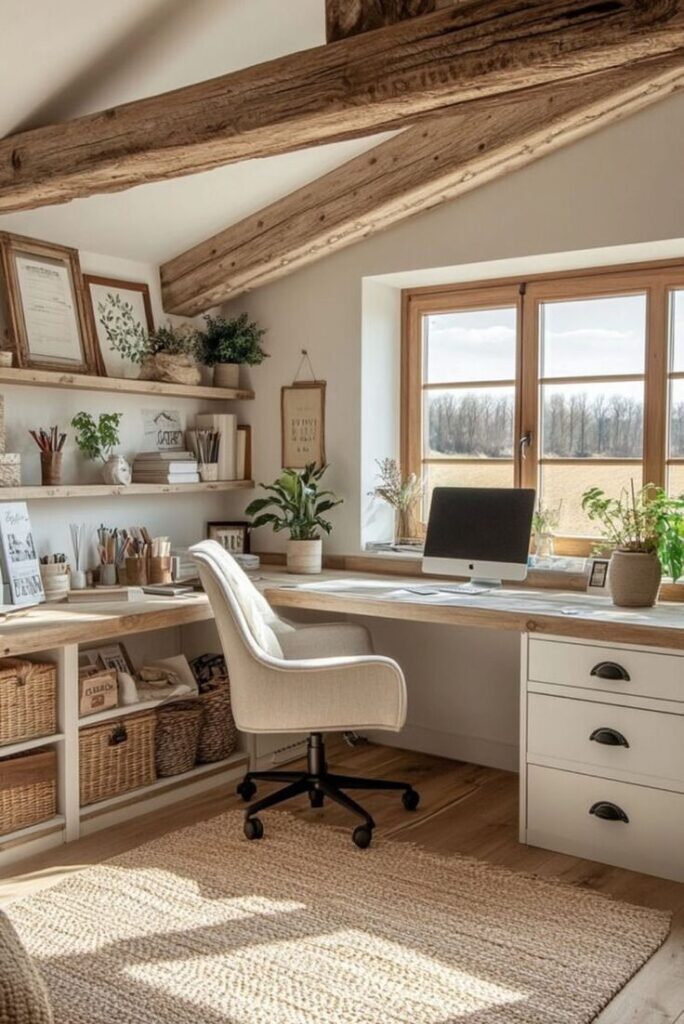
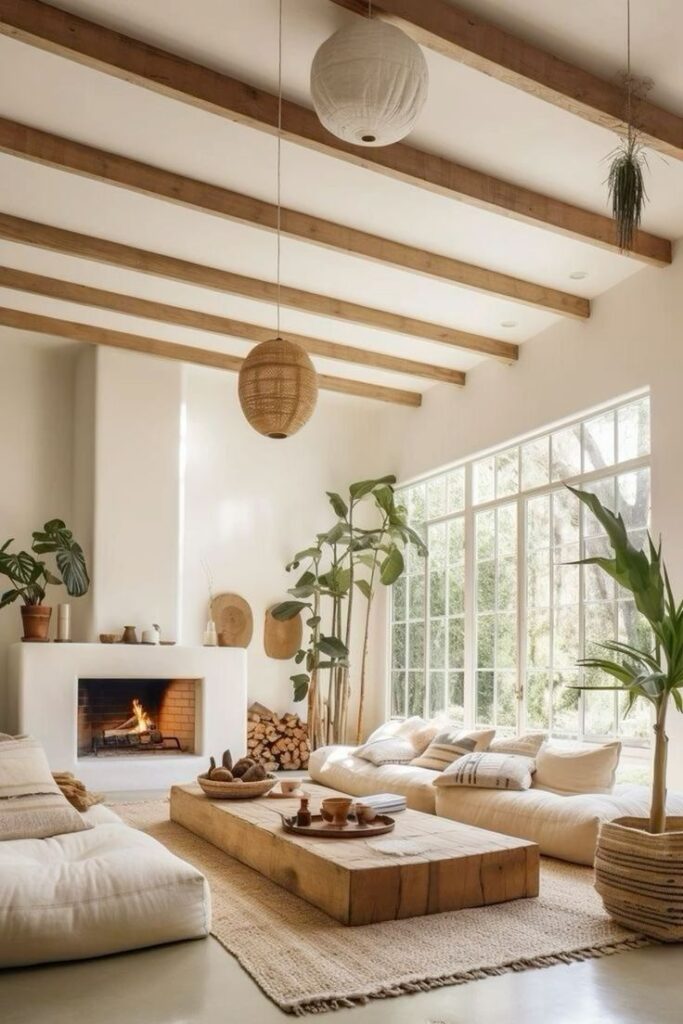
Furniture and Decorative Elements
Your rustic home focuses on natural materials and functional pieces that show craftsmanship and simple beauty. Combining sturdy furniture with artistic touches and woven accents shapes a balanced environment.
Essential Rustic Furniture Pieces
Start with wooden furniture made from reclaimed or distressed materials. Items like solid wood dining tables, chests, and rocking chairs bring authenticity to your space. Look for pieces with visible knots and grain to emphasize natural texture.
Furniture should be practical. A rocking chair with a rough-hewn finish adds charm and comfort, fitting well in living rooms or porches. Metal hardware or iron nails on furniture enhance the rustic feel without overpowering it.
Choose pieces that age well. Rough edges or worn paint are signs of quality rustic furniture. The goal is enduring style and comfort, not overly polished or ornate designs.
Incorporating Sculpture and Art
Sculpture and wall art in rustic decor often reflect nature or handcrafted techniques. Opt for simple, tactile sculptures in stone, wood, or iron.
You might place a wood-carved sculpture on a mantel or shelf as a subtle focal point. Large metal wall hangings with a rustic finish can complement exposed wooden beams or stone hearths.
Artworks that use organic forms or distressed finishes tie in well. Keep displays minimal so each piece stands out and maintains a grounded, natural look.
Selecting Rattan Accents
Rattan adds a light, woven texture that balances heavier wood elements. Use rattan in chairs, baskets, or lampshades to introduce warmth and softness.
You can place rattan accent chairs in reading nooks or pair rattan baskets with rustic storage solutions. These accents are durable yet casual, providing breathable texture.
When mixing rattan with solid wood or metal, aim for contrast in tone and scale. Lighter rattan pairs well with darker woods, enhancing the room’s layered, tactile quality without competing for attention.
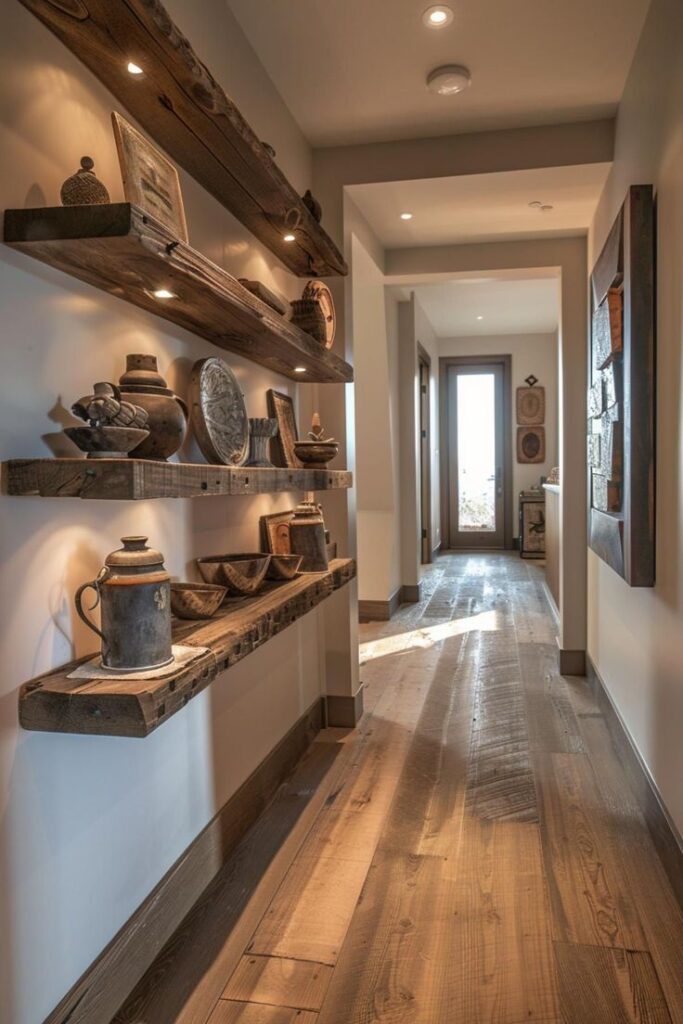
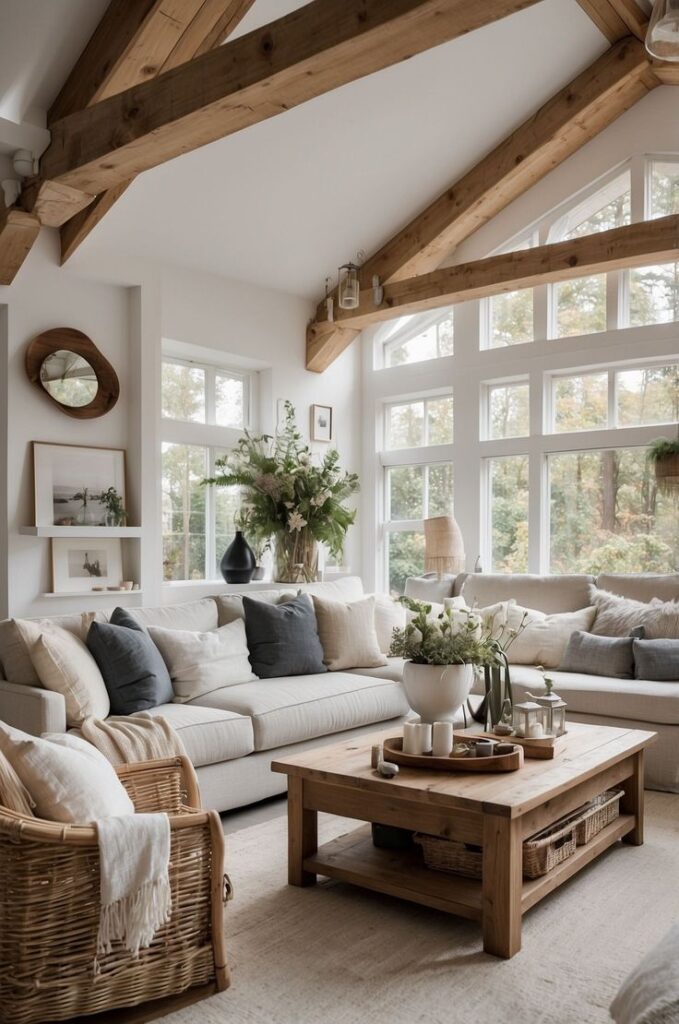
Designing Rustic Kitchens and Living Areas
Your rustic kitchen and living spaces should blend natural textures with practical elements. Focus on materials like reclaimed wood and stone, while keeping functionality a priority. Thoughtful design helps maintain the warm, inviting feel typical of rustic home decor.
Using Open Shelving for Display
Open shelving in a rustic kitchen highlights natural materials and creates a lived-in, cozy look. You can use reclaimed wood shelves to showcase pottery, vintage glassware, or wooden bowls. This approach emphasizes authenticity and provides easy access to everyday items.
When installing open shelves, consider spacing and weight capacity carefully. Arrange items to maintain visual balance—combine functional pieces with decorative ones. This setup avoids clutter while keeping your display personal and organized.
Functional Storage Solutions
Storage in rustic kitchens must be practical without sacrificing style. Use wooden cabinets with distressed finishes or wrought iron hardware to store bulkier items. Incorporating deep drawers helps keep utensils and cookware accessible yet out of sight.
Baskets made of natural fibers or wire bins add texture and allow flexible storage. Consider built-in niches or under-counter cabinets that maximize space in smaller rustic living areas. Effective storage maintains the kitchen’s clean, welcoming atmosphere.
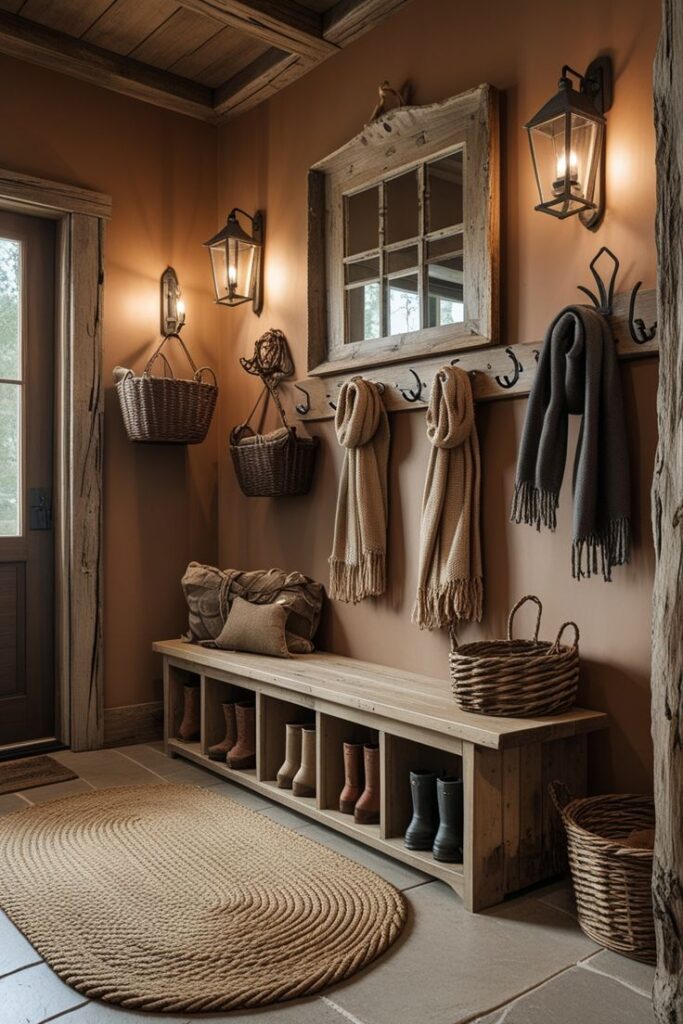
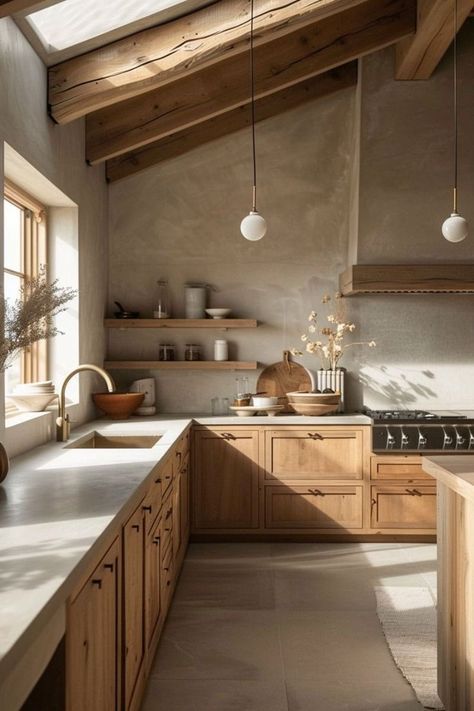
Creating a Cohesive Rustic Aesthetic
Achieving a cohesive rustic aesthetic requires deliberate choices that combine natural materials and functional design. Integrate rustic elements thoughtfully within your indoor spaces while considering how modern touches can complement rather than clash with the overall style.
Blending Indoor Use with Rustic Elements
Focus on natural materials like reclaimed wood, stone, and wrought iron to ground your space in rustic charm. Use wooden beams, exposed brick walls, or stone fireplaces as focal points that highlight the rustic theme indoors.
Incorporate textiles such as wool or linen in neutral, earthy tones for warmth and texture. Furniture should be sturdy and handcrafted when possible, favoring pieces with a distressed or aged finish.
Lighting should complement natural materials, so opt for fixtures in wrought iron or with a vintage look. Keep the indoor space functional without sacrificing the organic feel that defines rustic interiors.
Balancing Modern Touches
Introduce modern style elements to maintain comfort and usability while preserving rustic character. Choose sleek furniture with simple lines but paired with rustic materials like wood or leather.
Use neutral color palettes—grays, whites, or soft pastels—to provide contrast against the warm, natural tones typical of rustic décor. Modern lighting fixtures with minimalist designs can add sophistication without overpowering the rustic ambiance.
Avoid overwhelming the space with too many contemporary details. Instead, selectively add pieces like glass tables or polished metal accents that balance rustic warmth with clean, modern aesthetics.
- 0shares
- Facebook0
- Pinterest0
- Twitter0

